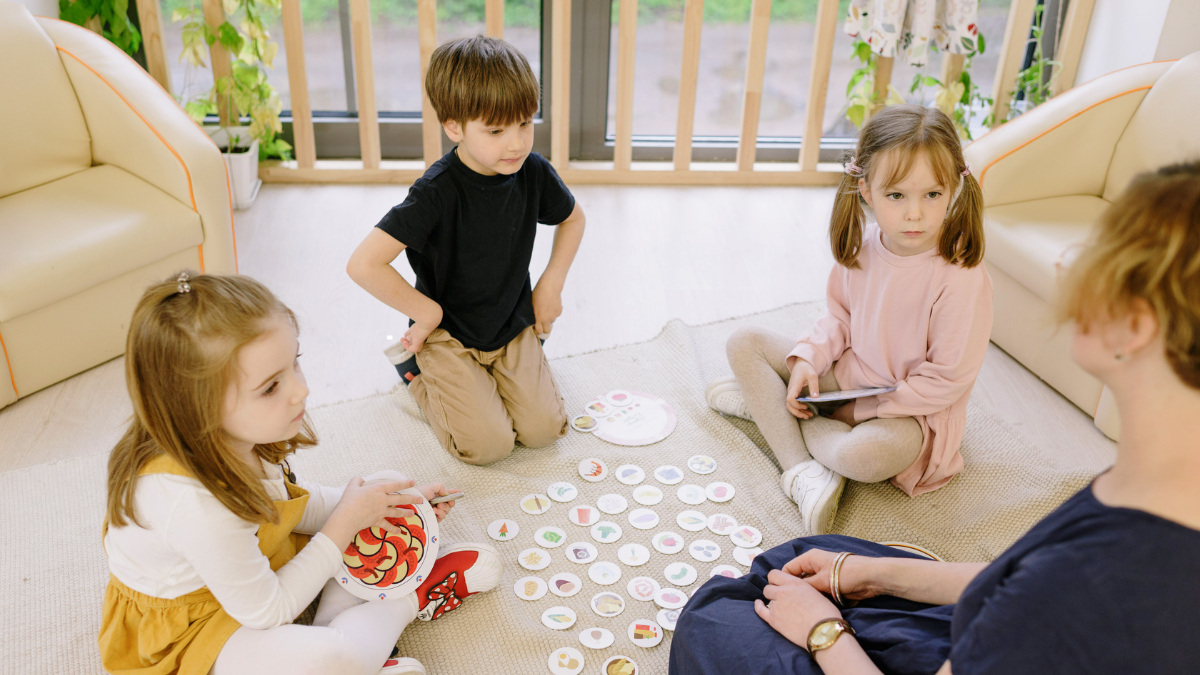As a parent, mealtimes can often feel like a battle—trying to get your toddler to eat healthy food is no easy task. From food refusals to picky eating habits, meal times can quickly become a source of frustration. But don’t panic—you’re not alone. This is a stage that most parents go through, and with a bit of patience, creativity, and the right strategies, mealtimes can become a much more enjoyable experience for both you and your little one.
In this post, I’ll share some helpful tips and tricks to make mealtimes smoother, while also promoting healthy eating habits in your toddler. Let’s dive in!
1. Provide a Range of Healthy Foods
Toddlers are naturally curious and love to explore new foods, even though they might not always show it. The key is offering them a variety of healthy choices. Don’t get discouraged if they refuse something one day, as they might love it the next. Here’s how to diversify your toddler’s meals:
Fruits: Offer different fruits like apples, bananas, strawberries, and peaches. Try cutting them into fun shapes or making a fruit salad to make it more appealing.
Vegetables: Serve a variety of vegetables like carrots, peas, or sweet potatoes. If your toddler finds certain textures challenging, try steaming or roasting them to soften them up.
Protein: Mix up protein sources like chicken, eggs, tofu, and beans. These are essential for growth, and offering different options ensures your toddler gets the nutrients they need.
Whole Grains: Include whole wheat bread, brown rice, oats, and quinoa in their meals. Fun shapes like pasta or small portions of grains can also make meals more enjoyable.
Related: How To Make Your Kids Happy
2. Make Meals Fun and Interactive
Toddlers are more likely to eat when they’re involved in the process. Try to make mealtime interactive by adding a playful touch:
Food Art: Encourage creativity by making faces or animals with their food. For example, use cucumber slices for eyes, a cherry tomato for a nose, and carrot sticks for a smile.
Finger Foods: Let your toddler eat with their hands. Small chunks of fruit, vegetables, or cheese are easy to handle and fun to eat.
DIY Meals: Get your toddler involved in meal preparation. Allow them to help with simple tasks like making a sandwich or adding toppings to a pizza. They’re more likely to eat what they help create.
3. Establish a Mealtime Routine
Toddlers thrive on routine, and mealtimes are no exception. A set schedule helps them know when it’s time to eat and when to expect snacks. Here’s how to build a mealtime routine:
Set Meal Times: Try to serve meals at the same time every day. Consistency helps your toddler understand when it’s time to eat.
Limit Snacks: Offer snacks at fixed times, but don’t give them too close to mealtime. If they snack too much, they may not feel hungry when it’s time for a proper meal.
Balance Meals: Ensure each meal includes a balanced portion of protein, grains, vegetables, and fruits to provide all the essential nutrients.
Related: How to Make Your Kids Listen
4. Be Patient—Don’t Force the Food
One thing toddlers hate is being forced to eat. Pressuring them to eat something they don’t want can lead to negative associations with food. Instead, be patient and let them explore at their own pace:
Don’t Push: If your toddler refuses a certain food, don’t force it. Try offering it again later or in a different form.
Praise, Don’t Push: When your toddler tries a new food—even if they don’t finish it—praise their efforts. Positive reinforcement helps them develop a healthy attitude toward food.
Make Mealtime Fun: Mealtime should be a pleasant, stress-free experience. Avoid distractions like TV or phones, and focus on enjoying the meal together as a family.
5. Limit Juices and Sweetened Drinks
Juices and sweetened beverages can fill up your toddler, making them less likely to eat solid food. While it’s okay to offer drinks, it’s important to limit sugary beverages:
Support Water: Water should be the primary source of hydration throughout the day.
Limit Juice: If you offer juice, make sure it’s 100% fruit juice and limit it to about 4-6 ounces per day. You can also dilute it with water to reduce the sugar content.
Avoid Soda: Soda offers empty calories and can interfere with your toddler’s appetite. It’s best to avoid soda altogether.
Related: How to Make Your Kids Mentally Strong
6. Make Mealtime a Family Activity
Toddlers love to mimic adults, and one of the best ways to get them to eat is to involve them in family mealtimes. When they see you eating the same foods, they’re more likely to try them too:
Eat Together: Whenever possible, sit down and eat meals as a family. Your toddler will feel encouraged to eat if they see you enjoying the same food.
Family-Style Meals: Serve food on the table and let your toddler serve themselves. This encourages independence and makes mealtime more interactive.
Talk and Connect: Use mealtime as a bonding opportunity. Ask your toddler about their day and talk about the food you’re eating. Keep the conversation positive and engaging.
7. Create a Calm, Relaxed Mealtime Environment
A quiet, calm environment can make a big difference in your toddler’s willingness to eat. If they’re distracted or uncomfortable, they may not focus on their food:
Reduce Distractions: Turn off the TV and avoid using electronics during mealtime. This will help your toddler focus on eating and enjoying their meal.
Comfortable Seating: Ensure your toddler has a comfortable place to sit, whether it’s a high chair or a booster seat. If they’re fidgeting, they’ll be less likely to eat.
Mealtime Rituals: Establish simple pre-meal rituals, like washing hands together or setting the table as a family. These rituals signal to your toddler that it’s time to eat.
8. Don’t Use Food as a Reward or Punishment
Using food as a reward or punishment can create unhealthy associations with eating. Mealtimes should be about nutrition and enjoyment, not transactions:
Avoid Bribing with Treats: Don’t offer dessert as a reward for finishing a meal. This can make your toddler view healthy food as something they have to get through to earn a treat.
Focus on Healthy Habits: Encourage your toddler to eat healthy foods because they’re good for them—not because they’ll get a treat afterward.
FAQ: Common Eating Problems in Toddlers and How to Handle Them
Q: My 2-year-old doesn’t eat vegetables. How can I get them to eat more greens?
A: Many toddlers dislike veggies, especially those with strong flavors or unusual textures. Try serving them in a different form, like roasted vegetables, mixed with a sauce, or as a smoothie. Be creative with how you present them—shaping veggies into fun designs can make them more appealing.
Q: How can I increase my toddler’s protein intake?
A: Offer protein-rich foods like eggs, chicken, tofu, and beans. Serve them in toddler-friendly portions, like small chunks or mini omelets. You can also get your toddler involved in simple meal prep, like helping you make a sandwich or wrap.
Q: My toddler refuses to try new foods. What should I do?
A: Don’t force them to eat new foods. Instead, continue offering them in different forms and be patient. It may take several attempts before they accept a new food. Keep it fun and low-pressure, and allow your toddler to explore at their own pace.
Getting your toddler to eat can be challenging, but with patience and the right strategies, it doesn’t have to be a stressful experience. Keep offering new foods, stay positive, and make mealtimes an enjoyable bonding time. By following these tips, you’ll help your toddler develop healthy eating habits that will benefit them for years to come.
Save the pin for later




